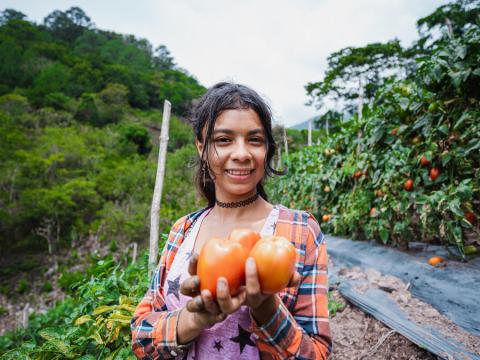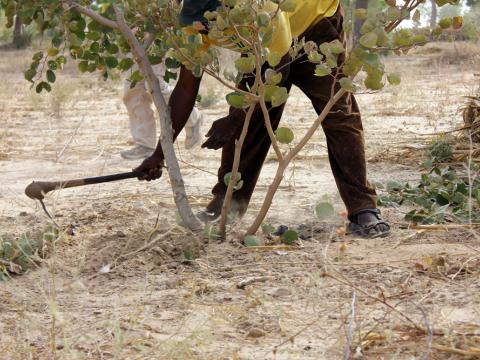
A Corridor of Hope
As the director of World Vision's programs addressing climate change in the Dry Corridor, Jorge Galeano reflects on what needs to be done to help children and families affected by the climate crisis.
21 November 2023
Vulnerable to extreme climate events, the Central American Dry Corridor is a strip of land extending 1,600 kilometres (about 1,000 miles) from southern Mexico through Guatemala, Honduras, El Salvador, and Nicaragua to Costa Rica. It is home to more than 20 million people in both rural and urban contexts and according to the World Food Programme, irregular drought patterns have left more than a quarter of households in the region food insecure.
Being one of the most affected regions by climate change in Latin America, if not the world, the people living in the dry corridor suffer from the devastating consequences of extreme floods and drought that make livelihoods for the most vulnerable populations near impossible. Prolonged periods of drought--followed by torrential rains --cause floods, landslides, crop damage, water pollution, and lack of drinking water. This leads to serious consequences in the livelihoods of its inhabitants causing food insecurity, lack of employment, and the migration of millions of Central Americans.
We wanted to listen to the voices of children living in the dry corridor in order to direct our efforts to their needs. More than 1250 children between the ages of nine to 18 participated in the World Vision survey conducted in Guatemala, Honduras, El Salvador and Nicaragua, and in 35 municipalities in the dry corridor.
This is a sample of what children from the dry corridor shared with us:
"Sad, because in drought the trees die, there is no water, we suffer from heat, people get sick with heart and blood pressure, respiratory diseases come from the dust,” said Axel, 11.
"Now it rains little, and when it rains the river overflows," said Samuel, 11.
"In my family my grandfather is the one who works in agriculture, we only eat beans, tortillas, rice 1 or 2 times a day and chicken or meat very little,” said Ana, 14.
"We have to carry water from about 500 or 600 meters, since the nearest well dried up,” said Maycol, 16.
"There are many people who have migrated to the US, because they don't farm or find work in the fields,” said Maricela, 11.
These children said that their communities have lost crops, experienced water and food shortages, as well as flooded houses after rains and in summer. These are just some of the problems experienced by children in the dry corridor
Working in the Central American Dry Corridor, World Vision addresses the urgent needs of children, their families and communities to the causes and consequences of the climate crisis for the millions of people living in vulnerable situations.
World Vision has listened to the voices of children and remains committed to impact the lives of 10 million inhabitants in the dry corridor, leaving a green footprint that conserves natural resources and mitigates against the worst impacts of climate change through the initiative: Regreening the Dry Corridor.
World Vision seeks to promote changes that will reduce the effects of the climate crisis on the most vulnerable populations and at the same time promote climate justice as a way forward to relating to the environment.
World Vision will focus its efforts for this initiative through four pillars in Regreening the Dry Corridor:
PILLAR 1. Regeneration of the environment/Care of the environment.
Promote the regeneration of the local environment by reconnecting communities and families with the environment.
PILLAR 2. Improve water resources
Communities in the Dry Corridor strengthen their knowledge and skills to comprehensively manage water resources.
PILLAR 3. Risk and Resilience Management
Involve communities in managing and reducing the risks of climate change impacts and build resilience as part of their development.
PILLAR 4. Food Security and Nutrition
Strengthen food security systems through good practices, behavioural changes, healthy environments, and authorities or service providers that increase their capacity to respond to community needs.
Jorge Galeano is World Vision's Director for El Salvador, Guatemala, Honduras, and Nicaragua; and the sponsor for the Dry Corridor Initiative. With more than 24 years working in development and humanitarian sector in Latin America and the Caribbean, he has a holistic view of the current challenges and opportunities for the organization.
Learn more about World Vision at COP28
